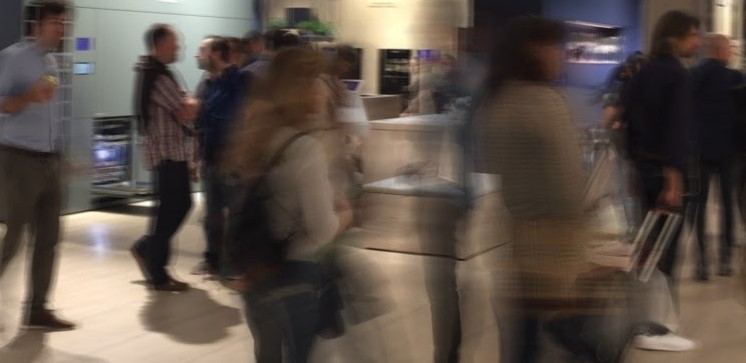As consumers or shoppers, we are often confronted with a lot of choices. This is when we use cognitive strategies to enable us to quickly, and with least possible effort, to make a choice. The choice is often not the perfect choice, but rather the most acceptable choice. As Rory Sutherland has said: “most people don’t optimize, they satisfice”
And we arrive at this choice mostly by de-selecting the bad options rather than selecting the best.
We have performed a large number of eye tracking studies on-line and in-store where we have mapped in great detail how shoppers navigate the store and assortment and how they de-select based on the available information and personal pre-conceptions. This process is off course dependent on the product, the cost of the product, and how pleasant it is to buy. But it always follows a clear de-selection process.
So how do people de-select? On what basis are large numbers of available options discarded in seconds? And how does this affect established brands or new innovations?
When searching for a new refrigerator most people start by googling the product to see what’s out there.

Compare these two options:
On-line: We google refrigerator and then click on the link of a retailer or aggregator. We are presented with a huge assortment displayed on a small 2D surface. It is quite hard to assess the whole assortment or navigate our way around it.
Off-line: We enter a store selling refrigerators and are confronted with a smaller assortment, but it is placed in a large area where we have to walk around to assess and navigate.
Both options have advantages and disadvantages. But it is the strategy and process that define the outcome.
On-line: To be able to navigate and make sense of the on-line assortment most people will filter the search results. But how do you filter? We know too little about refrigerators to filter on technical details so we filter on what we know: Price and Brand. This helps us to limit the choices and get to the next phase of the process which is comparing among a consideration set.
Off-line: We walk around and look at the fridges, de-selecting some based on size, design and possibly price. We don’t actually look at brands for guidance and price is not the first de-selection criteria. We also interact with fridges, some of which we might not have considered but look interesting. We discover new features, solutions and designs that we had not thought of. Some will be very expensive or otherwise not relevant, but our little discovery trip changes our perception of what we can buy and what we want to have.
The result of these differences is shown in our studies. When shoppers buy online they de-select based on price and brand and thereby often miss out on new options, new discoveries and models that are better suited to their needs, regardless of brand. And when shoppers buy off-line they will more often choose products that are outside of their initial budget, making off-line products less price sensitive then on-line products.
Large assortments are not necessarily good because of the paradox of choice. We also have a tendency to be less satisfied with our choice when the range of choices is too big. Combined with a difficult form of navigation this might lead to uncertainty and doubt. Which is why most shoppers actually do both. They search on-line, then visit a store, and after discovering new criteria and attributes they might continue on-line again.

The majority of shoppers buying a refrigerator will do on-line searches and visit a store. And most refrigerators are still bought in a physical store. The most common reasons to buy in a physical store, as stated by consumers, are the ability to touch, the assessment of physical products and the assistance of sales staff with expertise.
Humans have developed to navigate 3D environments and we do this remarkably well. We instinctively know where in the environment we are, and can judge objects in many ways, using all of our senses. It is cognitively much more difficult to navigate a 2D grid and to assess products based only on visual cues.
The context of the channel makes a significant difference in how shoppers de-select and ultimately what choices they make. When a brand wants to market new models and new innovations, they have a clear advantage doing so in physical retail.